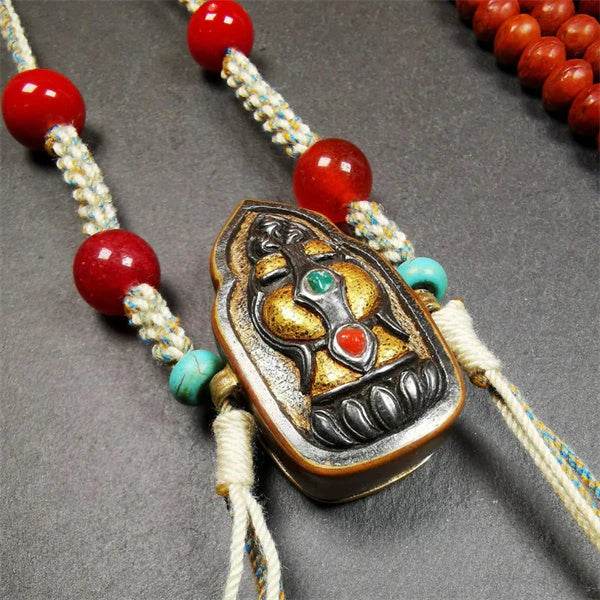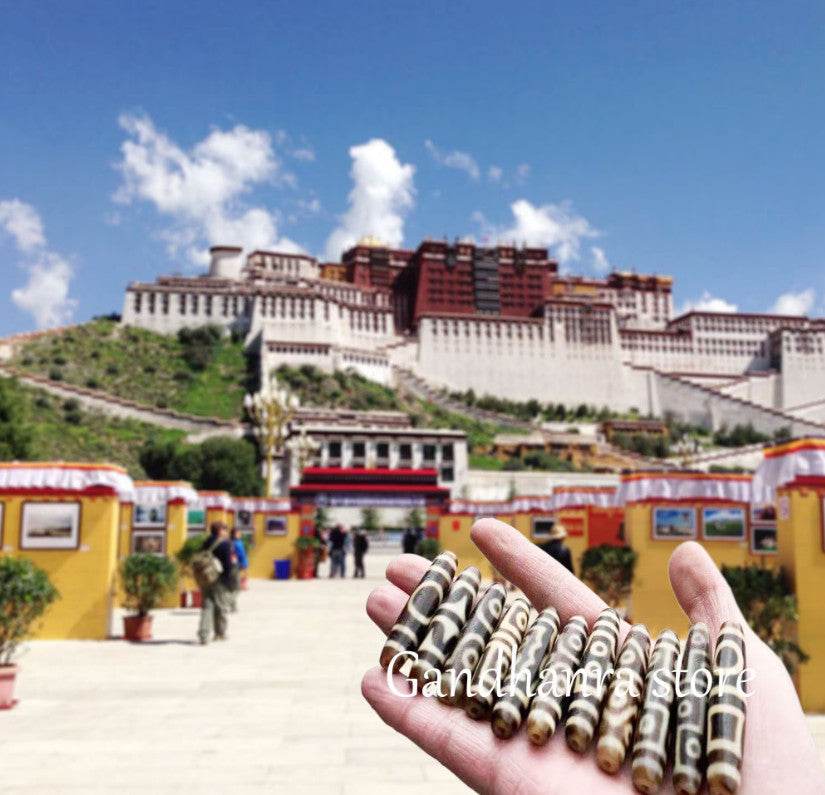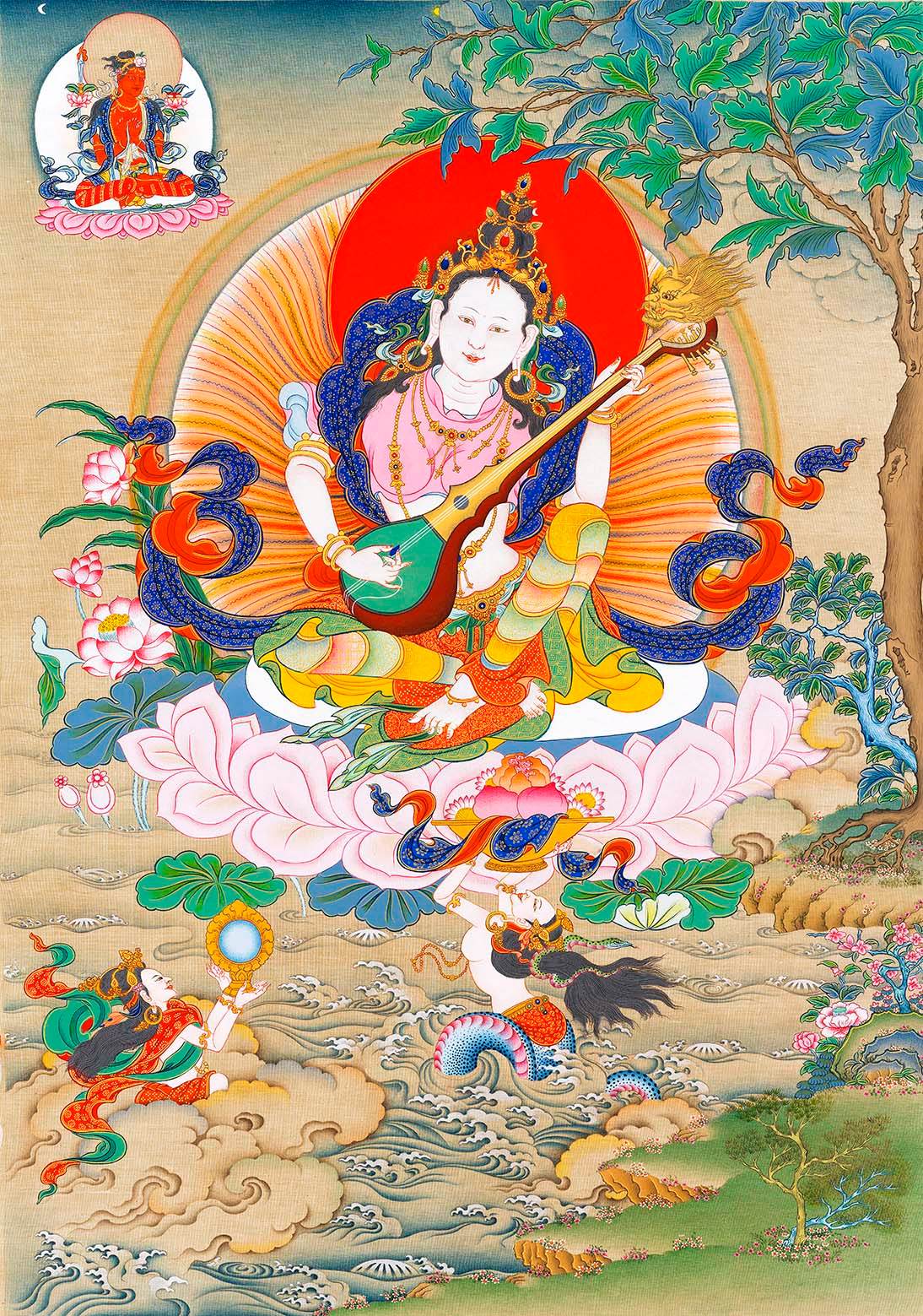
The first Tibetan woman in history to receive a Western education

A group photo of the couple Che Renzinme and Rinqin Zholma with their two daughters
"I was the first Tibetan girl to attend an English school, and Che Ren Wangzi was the first Tibetan boy."

Rinqin Zholma
The girl in this photo is only 16 years old, dressed in traditional Lhasa women's attire. This picture was sent by her to Mrs. Carolyn Stahl, the former principal of the English school in distant Tajiling, accompanied by the words: "Sincerely—Your student Mary Tsarong."

Mrs. Carolyn Stahl
Image source: A Brief History of Mount Hermon School by Hazel Innes Craig (1990)
Yes, she is Che Ren Rinqin Zholma (ཕྲེང་རིང་རིན་ཆེན་སྒྲོལ་མ།), also known as Mary Taring, recognized as the first Tibetan woman to receive a Western education.
Principal Mrs. Stahl mentioned: "Mary came from the Tsarong family and attended Queen's Hill School (later known as Mount Hermon School) from 1916 to 1919. At that time, she was only 11 years old—not as gentle and composed as in the photograph, but full of energy. Dressed in Western clothing, she quickly learned English and integrated into the community. She progressed from first grade to fourth grade during her time there."

Rinqin Zholma
Image source: Williamson Reel No. 22
The most mischievous daughter of the Tsarong family
In 1910, Rinqin Zholma was born into an ancient aristocratic family in Lhasa. Her lineage can be traced back to the renowned 8th-century Tibetan physician Yutok Yonten Gonpo.
"My father (Tsarong Wangchug Jeb) was tall, handsome, skilled in painting, and could play many musical instruments, such as the violin and the flute. Every morning, he would pray for about an hour, have breakfast, and then begin his day's work. But not long after, my father and brother passed away."

Tsarong Wangchug Jeb, father of Rinqin Zholma, in 1904
My mother (Yangjin Zholma) gave birth to me at the age of 38. She was a devout Buddhist. Although the deaths of my father and son caused her profound and lasting grief, Buddhism provided her with spiritual solace.
I still remember when I was six or seven years old, she took me with her to live in retreat for spiritual practice. I loved my mother deeply and would follow her everywhere until I started school. When I was ten years old, my mother also passed away.

Mother Yangjin Zholma and Rinqin Zholma as a child, with two maids beside them.
Photographed by: Tsarong Wangchug Jeb
At the age of eight, I went to study at Kyire Labtra. The opening ceremony was grand—students wore their finest clothes and were accompanied by their parents or servants. The families of new students brought butter tea, raisins, and other treats for all the teachers and students, and presented auspicious khata scarves to the teachers.
After that, classes officially began. The teacher would first lead everyone in reciting the Manjushri prayer, and we had to memorize a passage each day. Then, we started learning the Tibetan alphabet. The teacher would guide us one by one in writing until everyone had mastered it.

Lhasa street scene, with the old Tsarong residence on the right.
Photographed by: Ilia Tolstoy and Brooke Dolan
The teacher assigned a female classmate to help me practice the alphabet. She had a lame foot and couldn't stand steadily, so her full weight pressed against me—it was truly tormenting, and I couldn't forget it for a long time. But I learned quickly, and my mother was happy to see my progress each time.
However, there were times when I was very lazy and even received a slap from the teacher. Once, when the teacher suddenly entered the classroom to check our homework, I hadn't done mine. So I took another classmate's homework and pretended it was mine. Of course, the teacher saw through it all and made me stay after lunch to finish writing.

A group of Tibetan children
Photographed by: Colonel Leslie Weir
I was so frightened that I ran to a relative's house and didn't return to school, hoping the teacher would forget about me. But the next day, he called my name and said, "This most mischievous daughter of the Tsarong family can't be tamed without a beating."
As usual, he asked two male classmates to hold my arms and legs, but I told him there was no need to call anyone to hold me—I could do it myself. After saying that, I lay down on the ground and pulled my pants down. After four or five strikes, I finally couldn't bear it anymore, jumped up, and ran back home.

The steps of the Potala Palace, 1912
Photographed by: Colonel Leslie Weir
Zholma / Mary
Before my mother passed away, I once told her I wanted to go to a place where oranges grew. She said that was India, and it would require a long and difficult journey.
In 1920, Sir Charles Bell and Mr. David MacDonald came to Lhasa. Once, they were invited to the Tsarong residence for lunch. It was our first time seeing foreigners. Everyone said Sir Charles had a red face, golden hair, and a nose like a spout.

Sir Charles Bell, 1922
Image source: wikipedia
MacDonald's mother was Sikkimese, so he resembled a Tibetan more and could speak fluent Tibetan. During the gathering, he would always come out to play with my sister and me, repeatedly saying, "You should come to Tajiling to attend the English school. My daughters are also there."
My sister was easily shy, but I asked many questions, such as whether we could eat oranges, English biscuits, and chocolate in Tajiling. He said there were far more delicious things there than just those.

David MacDonald, around 1913
Image source: Charles Bell Collection
A year later, I was finally told that I could go to Tajiling and was extremely excited. Everything was ready, but on the morning of my departure, the thought of leaving everything familiar made me sad, and I started to cry.
I braided my hair, wore a brown satin robe (ཚལ་ཕྱུ་མ།, Sikkimese men's clothing) and velvet boots, mounted a small white horse with a silver saddle, and set off with four servants, including my father's most loyal personal steward, Nyerpa Dorje.

A government office in Lhasa
The journey from Lhasa to Tajiling took a full 17 days over mountains and through valleys, crossing various barren wastelands along the way. Harsh weather conditions like wind, frost, rain, snow, fog, and hail were common. The cold weather caused Zhoma's leather mask to freeze tightly to her skin.
Throughout the journey, they set off before dawn each day, stopping around 10 a.m. for breakfast, which included tea, tsampa, eggs, and cooked meat. Dinner consisted of dried noodles, dried yak meat, boiled mutton, and sweet or salty tea. Each day, they rode approximately 25 miles.

Illustration from the book - Crossing the river
After three weeks, we finally arrived in Yadong, where I stayed at the MacDonald home. After the winter break ended, I returned to school with his daughters. The MacDonalds treated me like their own child, and I became good friends with Annie, Vera, and Vicky (their three daughters). Among them, Annie taught me many things, from threading a needle to using sanitary pads.
Usually, they called me Zhoma. Later, Annie asked if she could call me Mary, saying it was the name of the Holy Mother in Christianity. I thought it sounded similar to Zhoma, so I agreed. From then on, everyone started calling me Mary.

Rinqin Zholma at school, 1923
Pear hidden in pants
In my first year of school, I was placed in the pre-school class. Since I couldn't understand English, I found it quite difficult at first. But before long, I was promoted to the first grade. Teacher Hannah was kind and gentle, always teaching with a smile. Most of the classmates were British or American, and they all liked me very much. I quickly became familiar with everyone.

Queen's Hill School, 1926
Image source: hippostcard
There was a fruit stall next to the train station, and we usually liked to buy pears there to eat, but this was forbidden by the school ("forbidden fruit"). Once, it was my turn to buy them. I hid the pears in my navy bloomers and headed back to school. Unexpectedly, I ran into Mrs. Stahl on the staircase. Just at that moment, one pear slipped out of my pants and fell down the stairs.
"What are you doing?" she asked. I awkwardly climbed one more step, and another pear fell out, bouncing noisily down the steps. Mrs. Stahl asked again, "What is all this?" My face filled with fear, and I stood there, not daring to move, tears welling up in my eyes. She didn't press further and left.

Queen's Hill School Classroom
Image source: "Mission Photograph Album-India#01 page0036"
Because she came from Tibet, the school teachers and students always gave Zhoma many privileges, and Mrs. Stahl was usually very fond of her. On another occasion, encouraged by the other girls, she went to the principal and asked if she could go to see a movie. Mrs. Stahl replied, "Of course, Mary can't watch movies in her hometown."

Queen's Hill School
Image source: darjeelingheritage
A husband like a father
At the age of 16, I returned to Lhasa from Tajiling. Although I had spent over three years at the English school, I was competent enough to become the secretary of Tsarong Dasang Zodpa and take charge of Tibetan-English translation for important business correspondence.
A year later, Tsarong expressed his desire to marry me. At the time, he had already married my two older sisters, and I felt it was inappropriate for me to marry him as well, especially since he was 25 years older than me. He said that if I later met a more suitable young man, I could marry that person anytime. I was very young at the time, and he was so influential, so I agreed, but I was not happy.

Tsarong Dasang Zodpa
Tsarong respected all three of his wives equally, but toward me, he was more like a father than a husband.
In 1928, I became pregnant. At that time, I would circle the Jokhang Temple 50 times every day. Whenever my maternal aunt saw me, she would say, "You are still a child yourself, and now you are carrying a child." I resisted that statement because being pregnant meant I was an adult, but at the time, objecting would have been impolite.

Tsarong Residence Dining Room
Che Ren Wangzi
"In the early winter, I gave birth to a girl, Tsering Yangzom. Not long after, I received a congratulatory letter in English from Che Ren Wangzi Jigme.
While at Tajiling, Jigme also enrolled in Mount Hermon School and became my classmate. Our interactions gradually increased from then on. He was a quiet boy, and we often spent time together when we were in Kalimpong. I was the first Tibetan girl to attend an English school, and Che Ren Wangzi was the first Tibetan boy."

The Tsarong family (Jigme is the first on the bottom right)
Along with the congratulatory letter, there was also a photo and another letter addressed to my sister, Xiangqu Zholma. In the letter, he expressed that if possible, he would like to marry her. I thought this match would be excellent because I knew him well.
After translating the content of the letter for my sister, she only smiled and did not respond. I wrote back to express my gratitude for Jigme's congratulations and assured him that I would reply promptly after receiving my sister's answer.

My two older sisters, Tseten Drolkar and Norbutsering, wearing Lhasa headdresses and necklaces.
I showed Tsarong a photo of Jigme and discussed the proposed marriage with him. Tsarong thought for a moment and asked if I had any romantic feelings for Jigme during our school days. I replied that although we often spent time together back then, we never had a romantic relationship. Tsarong said that if I were willing, it would be most appropriate for me to marry Jigme, since we both spoke English and could work together at the Tsarong residence in the future. For the sake of my happiness, he hoped I would marry an outstanding young man. I agreed.
In the end, I married Che Ren Jigme, and my younger sister married his brother, Chime Dorje. The wedding was grand and lasted for seven days. On the morning I left home, the sun had just risen. I rode a pregnant mare, and the servants' singing continued until noon.

Che Ren Jigme
Image source: wikidata
Life at the Tsarong Estate was different from the fast-paced life at the Tsarong residence—it was very peaceful. My parents-in-law often read, chanted scriptures, or gardened. Jigme and I were also very happy together. Like my father, he was a talented artist who enjoyed gardening, was skilled in woodworking, and even cooking.
In 1934, my two daughters, Ngodup Wangmo and Yangdol, were born one after the other.

Tsarong's sister-in-law, mother-in-law, and Rinqin Zholma
Mother Tsarong La
In the 1950s, Rinqin Zholma and her husband began dedicating themselves to children's education, continuing until the very end of her life. She loved teaching, and the children there all called her "Amala." She could remember every child's name, showed equal care for both big and small matters in their daily lives, embraced them, and made each child feel unique. She had a natural charm.
For her, "Amala" was indeed a fitting title. Like her people, Rinqin Zholma was humorous, kind, resilient, and full of faith.

Rinqin Zholma and her niece at Mussoorie School
In 1970, Rinqin Zholma completed her personal autobiography, "Daughter of Tibet." "I originally wanted to write it 10 years ago, but I was always busy taking care of the children at the school." In the book, she narrates her life experiences in a sincere and朴实 tone. "I want to thank my husband, Jigme, who carefully read my book and helped me reflect on our lives together."

"Daughter of Tibet" cover - Rinqin Zholma and her daughter
"I wrote this book because I thought it might be somewhat useful for young Tibetans. I hope that through this book, they can gain a deeper understanding of Tibetan cultural traditions. In fact, there are many books on Tibetan history, culture, and religion, but I felt that sharing the personal experiences of a Tibetan woman might be more effective.
Initially, I was a bit worried—would this book actually serve its purpose after publication? How would Westerners perceive it? But the outcome wasn't bad; everyone liked the book."

Cover image of Rinqin Zholma's autobiography
《Daughter of Tibet》
"I am deeply grateful for the opportunity to learn English in my youth. It played a significant role in my life and also served as the foundation for Jigme and me to marry and build a family together.
We used English as a practical tool without letting it alter our beliefs and values. English acted like a bridge, allowing us to build friendships with people from all over the world."

Mrs. Williamson with the Tsarong and Tsarong families
Rinqin Zholma is the second from the right, at Dekyilingka
Image source: Memoirs of Margaret D. Williamson
The last work of Rinqin Zholma during her lifetime was to translate her book "Daughter of Tibet" into Tibetan. The printing officially began one month before her passing. On July 29, 2000, she passed away in Raipur at the age of 90.

Rinqin Zholma in her later years
Rinqin Zholma and her husband Che Ren Jigme were among the few Tibetans most familiar to foreigners at the time. This was not only due to their warm hospitality and sincere friendship but also because they were virtually the only Tibetans who engaged with foreigners.
Their fluent English allowed them to understand the lives and ways of thinking of Westerners, while those foreigners, in turn, came to know Tibet through them. They were a bridge.

Rinqin Zholma, hand-colored






